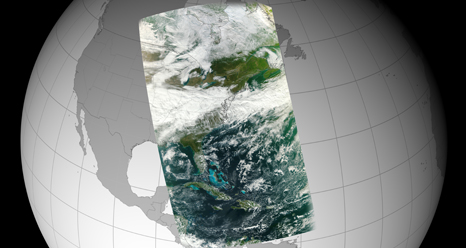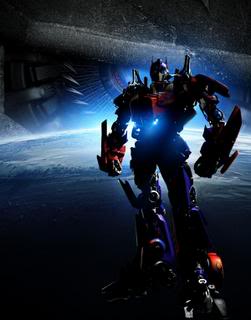 This year, the winter solstice takes place on Thursday, Dec. 22 at 12:30 a.m. EST. The winter solstice marks the day when winter officially starts in the Northern Hemisphere and when days start to become incrementally longer. Do you understand why this happens? Find out at the Chandra website and then incorporate the information into the NES lessons Heat Transfer: MESSENGER — My Angle on Cooling (grades 5-8), Analyzing Solar Energy Graphs: MY NASA DATA (grades 9-12), and Temperature and Earth Climate: Modeling Hot and Cold Planets (grades 7-9).
This year, the winter solstice takes place on Thursday, Dec. 22 at 12:30 a.m. EST. The winter solstice marks the day when winter officially starts in the Northern Hemisphere and when days start to become incrementally longer. Do you understand why this happens? Find out at the Chandra website and then incorporate the information into the NES lessons Heat Transfer: MESSENGER — My Angle on Cooling (grades 5-8), Analyzing Solar Energy Graphs: MY NASA DATA (grades 9-12), and Temperature and Earth Climate: Modeling Hot and Cold Planets (grades 7-9).
Month: December 2011
NES Engineering Design Challenge Brings Rigor and Relevance to Classroom
NASA Explorer Schools educator Kaci Heins from Northland Preparatory Academy had seen the Engineering Design Challenge: Thermal Protection System demonstrated but did not have the lesson plans. However, this year she saw the module for the Thermal Protection Systems in the NASA Explorer Schools lesson library. She was thrilled because she had to teach thermal energy to her students as part of the new sixth-grade science curriculum. She knew this would be the perfect investigation to incorporate rigor and relevance into this unit.
Take time to read the NEON forum post <http://neon.intronetworks.com/#Forum/forum/2/1335/267/1407> to learn how Kaci used this lesson and see how you too can use it in your classroom.
NES Educator Uses Summer Research Experience to Enrich Lesson
Amanda Blough’s fourth-grade students at Corpus Christi School completed a unit on weather and the water cycle. The class talked about water, how it affects weather, and how it is recycled.
NPP Settles Into Orbit
 On Friday, Oct. 28, 2011, the NPOESS Preparatory Project spacecraft was launched aboard a Delta II rocket from Vandenberg Air Force Base in California. NPP represents a critical first step in building the next-generation Earth-observing satellite system that will collect data on both long-term climate change and short-term weather conditions. NPP will extend and improve upon the Earth system data records established by NASA’s Earth Observing System fleet of satellites that have provided critical insights into the dynamics of the entire Earth system.
On Friday, Oct. 28, 2011, the NPOESS Preparatory Project spacecraft was launched aboard a Delta II rocket from Vandenberg Air Force Base in California. NPP represents a critical first step in building the next-generation Earth-observing satellite system that will collect data on both long-term climate change and short-term weather conditions. NPP will extend and improve upon the Earth system data records established by NASA’s Earth Observing System fleet of satellites that have provided critical insights into the dynamics of the entire Earth system.
Link to the NES Virtual Campus home page.
New NASA iPhone App: Tracking Meteoroids
Surprising but true: Every day, on average, more than 40 tons of meteoroids strike our planet. Most are tiny specks of comet dust that disintegrate harmlessly high up in Earth’s atmosphere, producing a slow drizzle of meteors in the night sky. Bigger chunks of asteroid and comet debris yield dozens of nightly fireballs around the globe. Some are large enough to pepper the ground with actual meteorites.
Take a Tour of the Electromagnetic Spectrum
 This resource presents the electromagnetic spectrum by introducing how we interact with these waves on a daily basis and how NASA scientists use the unique qualities of each wavelength to study the sun, planets and origins of the universe. EM waves measured by Earth-observing satellites help NASA scientists understand our Earth system and changing global patterns and climate.
This resource presents the electromagnetic spectrum by introducing how we interact with these waves on a daily basis and how NASA scientists use the unique qualities of each wavelength to study the sun, planets and origins of the universe. EM waves measured by Earth-observing satellites help NASA scientists understand our Earth system and changing global patterns and climate.
NASA Now — Exploring Asteroids: An Analog Mission
 NASA Now — Exploring Asteroids: An Analog Mission is available on the NES Virtual Campus beginning Dec 14, 2011.
NASA Now — Exploring Asteroids: An Analog Mission is available on the NES Virtual Campus beginning Dec 14, 2011.
2011 OPTIMUS PRIME Spinoff Award Video Contest
 NASA has opened registration for the 2011 OPTIMUS PRIME Spinoff Award Contest. Featuring OPTIMUS PRIME, the leader of the popular TRANSFORMERS brand, the contest highlights spinoffs from NASA technologies that are used on Earth. The goal is to help students understand the benefits of NASA technology to their daily lives. Last year’s contest was open to students in grades 3-8 and resulted in 76 video submissions from over 190 students in 31 states.
NASA has opened registration for the 2011 OPTIMUS PRIME Spinoff Award Contest. Featuring OPTIMUS PRIME, the leader of the popular TRANSFORMERS brand, the contest highlights spinoffs from NASA technologies that are used on Earth. The goal is to help students understand the benefits of NASA technology to their daily lives. Last year’s contest was open to students in grades 3-8 and resulted in 76 video submissions from over 190 students in 31 states.
Link to the NES Virtual Campus home page.
REMINDER: Live Video Chat Today at Noon
Did you know there are approximately 19,000 man-made objects orbiting Earth that serve no useful purpose? And those are just the objects having a diameter of 10 centimeters (4 inches) or larger. The estimated population of objects between 1 and 10 cm in diameter is closer to 500,000! Now, think about launching new spacecraft or satellite into space without hitting any of these objects and you can appreciate the kind of work Danielle Margiotta does as an engineer for NASA. Join us at noon EST on Dec. 13, 2011, to ask Danielle questions about the ins and outs of contamination engineering, or how to help a spacecraft and satellites navigate and manage their inevitable encounters with space junk.
Classroom Discussion: Buy a Live Christmas Tree or an Artificial One?
 Get a real tree this holiday season. Buy it or cut it yourself at a tree farm. Either way, you will be helping the environment.
Get a real tree this holiday season. Buy it or cut it yourself at a tree farm. Either way, you will be helping the environment.
Link to the NES Virtual Campus home page.
.
